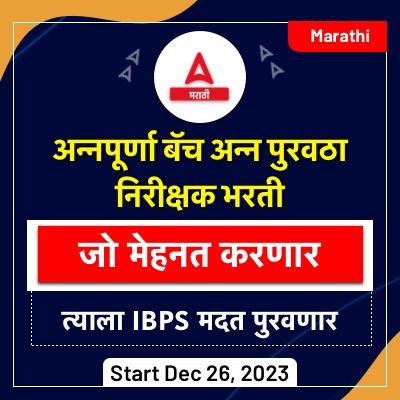Playing to the gallery can be injurious to rail safety
(The Hindu, 28/05/24)
Recent incidents involving loco pilots in Indian Railways highlight a potential conflict between punctuality and safety.
- Recent incidents (pilotless train rolling from Kathua station, Vishakapatnam-Rayagada rail accident in Oct 2023) showcase a culture of blame game and pressure to prioritize punctuality over safety, impacting both crew morale and operational efficiency.
What are the key Issues faced by Loco Pilots?
- Vacancies: With nearly 10% vacancies in the cadre of loco pilots and also ever increasing volumes of freight traffic handled each year, the pace of hiring loco pilots is slow.
- Overworked Staff: Staff shortages lead to extended duty hours and exhaustion, impacting alertness and judgment.
- Unrealistic Targets: Pressure to meet strict timetables incentivizes exceeding safe speed limits and ignoring safety protocols.
- Flawed Blame Game: Accidents often lead to immediate punitive action against loco pilots, even when rule adherence is evident. This discourages honest reporting of safety concerns.
- Inadequate Training and Monitoring: Training gaps and ineffective monitoring of train operations under abnormal conditions contribute to lapses in safety protocols.
- Lack of Infrastructure Upgradation: Outdated signaling systems and inadequate track maintenance exacerbate risks.
What is the way forward?
- Prioritize Safety: A cultural shift is needed to prioritize safety over punctuality. Robust safety protocols and training programs should be emphasized.
- Improve Working Conditions: Filling staff vacancies, addressing extended duty hours, and ensuring adequate rest are crucial for crew well-being.
- Invest in Modernization: Upgrading signaling systems, track infrastructure, and fatigue detection technology will minimize human error.
- Fair Inquiry Process: Investigations should be objective and evidence-based, avoiding knee-jerk reactions that penalize rule-abiding pilots.
- Open Communication Channels: Fostering an environment where loco pilots feel comfortable raising safety concerns without fear of reprisal is essential.
Can you answer the following question?
The recent incidents involving loco pilots in Indian Railways highlight a conflict between achieving targets and ensuring safety. Analyze the ethical dilemmas faced by loco pilots in such situations. Suggest a framework for ethical decision-making that they can employ while navigating these challenges.
Answer Hint:
Ethical Dilemmas:
- Duty to Passengers vs. Safety: Loco pilots have a primary duty to ensure passenger safety, yet pressure to maintain schedules creates a conflict.
- Following Orders vs. Moral Responsibility: Following superiors’ orders to prioritize punctuality might conflict with the pilot’s moral obligation to ensure safety.
- Speaking Up vs. Retribution: Reporting safety concerns may risk disciplinary action, even when adhering to regulations.
Framework for Ethical Decision-Making:
- Utilitarian Approach: Consider the consequences of each action – prioritizing safety minimizes potential harm (deaths, injuries) even if it causes delays.
- Deontological Approach: Uphold duty to safety, adhering to safety protocols despite external pressure.
- Rights-Based Approach: Recognize the right of passengers to safe travel supersedes the need for strict punctuality.
- Virtue Ethics: Cultivate virtues like courage, integrity, and whistleblowing to ensure ethical decision-making under pressure
Where animals are dying by a thousand cuts
(The Hindu, 28/05/24)
Uttar Pradesh grapples with a burgeoning population of stray cattle, posing significant challenges for farmers and wildlife alike.
What are the Factors Contributing to Stray Cattle?
- Ban on Cattle Trade: The 1955 ban on cattle trade without permits disrupted the livestock economy, leading to the abandonment of unproductive cattle.
- Religious Beliefs: Cultural reverence for cows discourages slaughter, further increasing stray cattle numbers.
- Loss of Grazing Lands: Urbanization and agricultural intensification have shrunk grazing lands, forcing cattle onto farms.
What are the Ecological and Socio-economic Implications of Stray Cattle?
- Impact on Agriculture: Stray cattle destroy crops, impacting food security and farmer livelihoods.
- Threat to Wildlife: They compete with wild herbivores and attract predators like tigers, leading to increased human-wildlife conflict.
- Spread of Disease: Unvaccinated stray cattle can transmit diseases like foot-and-mouth and tuberculosis to wild animals.
- Economic Burden: The government spends significant resources on feeding stray cattle, diverting funds from other crucial areas
What is the way forward?
- Revitalizing Livestock Economy: Promote ethical cattle trade with permits and ensure proper animal welfare practices.
- Cow Shelters and Rehabilitation: Establish well-maintained sanctuaries with proper feed and veterinary care for unproductive cattle.
- Public Awareness Campaigns: Educate farmers about alternative livestock management practices and responsible cattle rearing.
- Financial Incentives: Encourage adoption of indigenous breeds by farmers through subsidies and market access
Can you answer the following question?
The problem of stray cattle in India has emerged as a major concern, impacting both agriculture and wildlife. Discuss the factors contributing to this issue and analyze its ecological and socio-economic implications. Suggest a sustainable solution.
महाराष्ट्रातील सर्व स्पर्धा परीक्षांसाठी ऑनलाईन क्लास, व्हिडिओ कोर्स, टेस्ट सिरीज, पुस्तके आणि इतर अभ्यास साहित्य खाली दिलेल्या लिंक वर क्लिक करून मिळवा.
अड्डा 247 मराठीचे युट्युब चॅनल
अड्डा 247 मराठी अँप | अड्डा 247 मराठी टेलिग्राम ग्रुप











